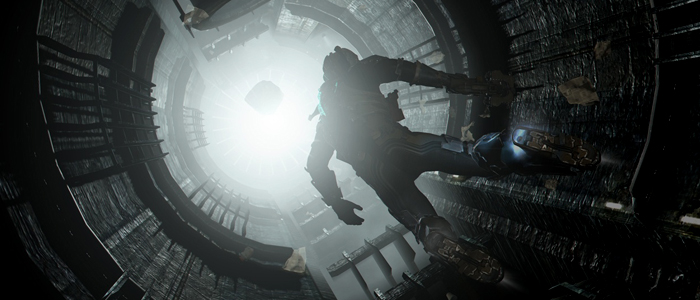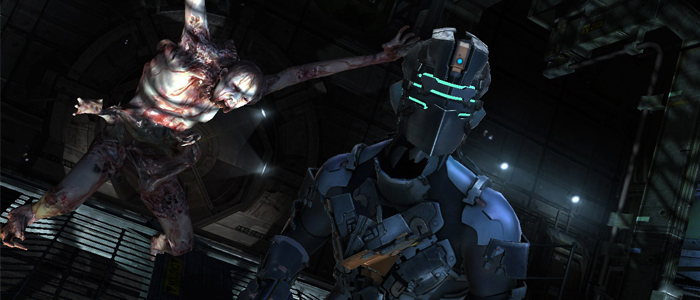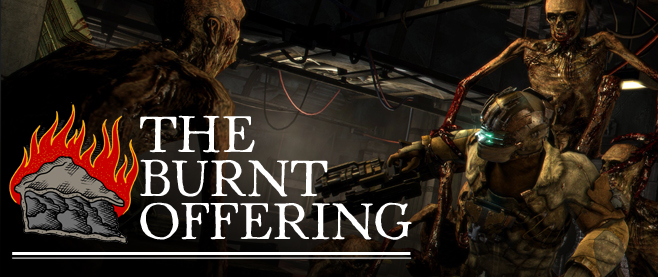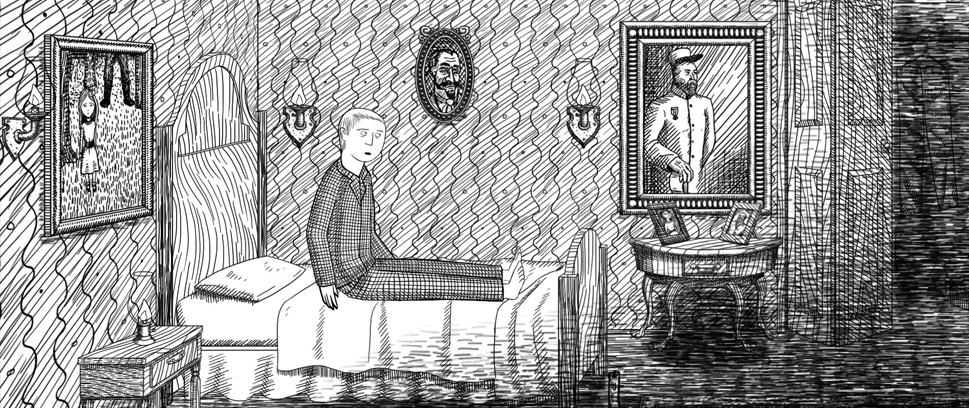
The American Culture of Horror: Dead Space
Part 4: The Special Relationship
(Read Part 1, Part 2 and Part 3)
America has long had a special relationship with England – those Pilgrims and Puritans of old were Englishmen sailing to an English colony after all. Our primal American fears are filtered, at some level, through an English sensibility.
Interestingly, as science fiction has cross pollinated with horror that special relationship has grown. Many classic films of the subgenre – Alien, Day of the Triffids, Life Force, Event Horizon, Frankenstein Unbound – are the product of collaboration between American and English creators.
The trend has carried over to videogames with the relentlessly chilling Dead Space franchise from Visceral Games.
Dead Space was created by American born Glen Schofield, who served as executive producer for the game. Since then, American writer Rick Remender and English writers Antony Johnston and Warren Ellis have also contributed.
At its core, Dead Space, its sequel and its spin-off movies and comics, are perfect examples of American horror. The game follows Isaac Clarke (even his name is an international collaboration: Isaac Asimov was American and Arthur C. Clarke was English) as he tries to escape a mining ship overrun by necromorphs – human corpses mutated and animated by exposure to an alien life form. The sequel take place three years later and sees Isaac, now suffering from post-traumatic stress disorder, attempting to survive a new outbreak, this time on a space station near Jupiter.

The games are studies in isolation. The infestations spread with alarming speed, leaving Isaac and the few other survivors surrounded by grotesque ravenous creatures whose only desire is to kill. Both the mining ship and the station are isolated in the vacuum of space. Even Isaac himself is cut off, by his own fragile mental state and the very space suit that helps protect him from the creatures – and distances himself from his fellow humans.
Making matters worse is the Marker, the alien artifact at the heart of the infestation. Proximity to the Marker has a debilitating psychological effect, with symptoms including insomnia and delirium. Prolonged exposure leads to visions of dead friends and eventual psychotic breaks. The Marker needs corpses to infect, so it drives the living to kill.
The interactive nature of the game coupled with the unyielding horror is psychologically debilitating to the player as much as it is to Isaac. Both sequels underscore your state of danger by attack with wave after wave of necromorphs, even during moments, such as conversations or elevator rides, when traditional gameplay conventions would lead you to believe you are safe.

And that is just the active, antagonistic horror. Passive elements like the score and the ambient noises, whispers, clanks, static and other sound effects heighten the tension, even when there really is nothing to be worried about. The atmosphere of Dead Space is exhausting.
As American as those elements are, there are other elements – the breakdown of order, the destabilizing role of religion and the undignified treatment of the dead – which strike me as particularly unsettling to the English sensibility (of course, I am an American and I can’t really speak to their cultural anxieties; I can only guess based on episodes of Doctor Who and those pervy Clive Barker novels).
America is entering its third century of horror entertainment. The 19th Century was dominated by the printed word and the 20th Century by film. In this early part of the 21st Century, videogames are poised to be the new dominant medium, more immersive and interactive than anything we have known previously.
We may be constantly evolving but, if Dead Space is any indication, we are still haunted by ghosts that are more than three hundred years old.
~
I am scared of a lot of things, but the thing I fear most is that you aren’t following me on Twitter @StuHorvath.




